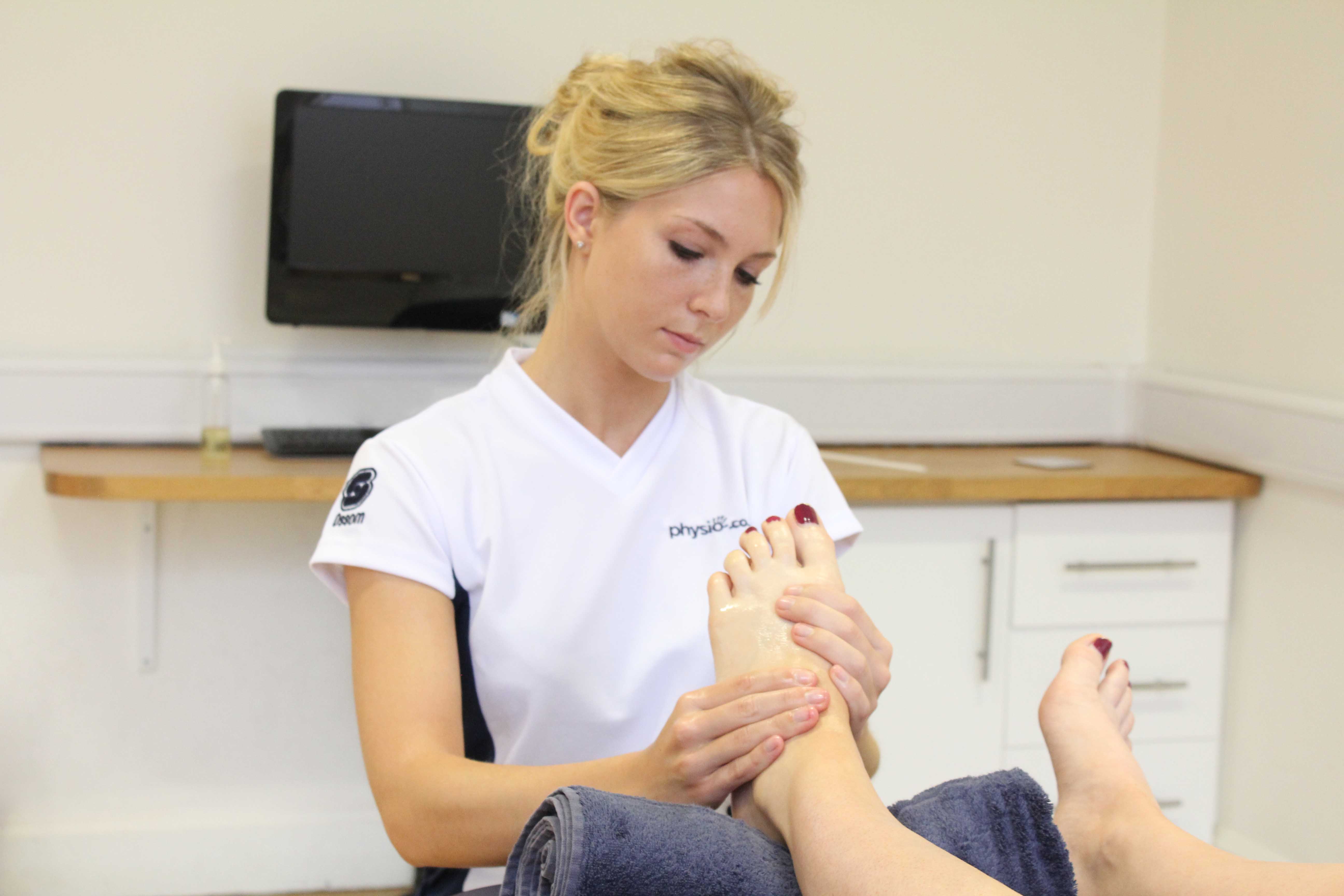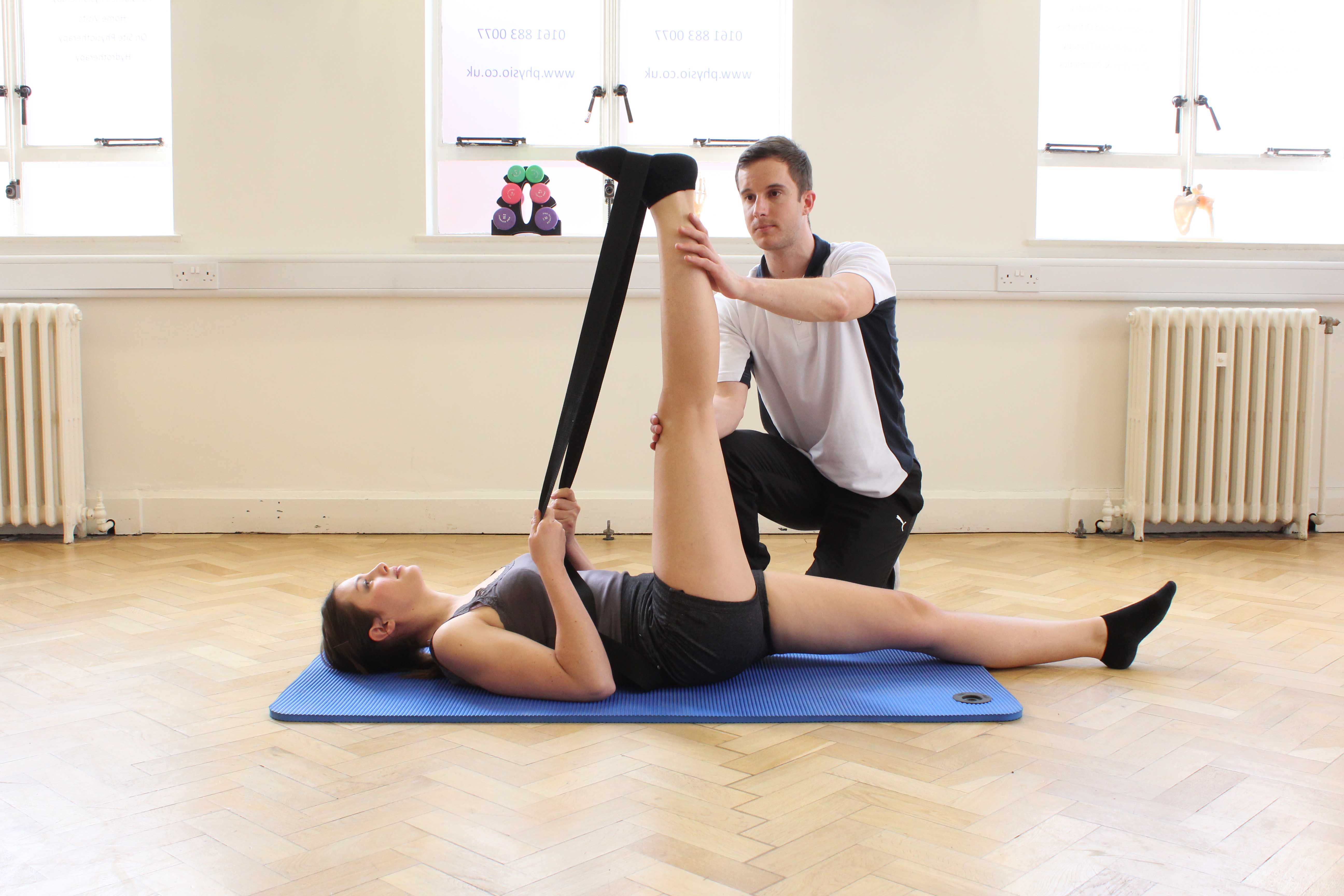What is os trigonum syndrome?
The os trigonum is an accessory (extra) bone that develops between the talus (ankle bone) and Achilles tendon in some people. Os trigonum syndrome is the name given to any pain caused by the presence of the bone.
What causes os trigonum syndrome?
Not everybody has an os trigonum bone. Having an os trigonum is nothing to be worried about, about 10% of the population have this extra bone and many of those who do have it will never know because they never experience any pain because of it.
An os trigonum develops during adolescence when the bone fails to fuse properly. Pain tends to occur in those with an os trigonum following exercise that involves excessive pointing of the toes for example ballet, trampolining or kicking in football. Symptoms can be caused either by the bone becoming trapped between the ankle and heel bones, or the bone disrupting the soft tissue structures in the area.
 Above: Soft tissue massage and mobilisations of the bones and connective tissues in the foot by an experienced therapist
Above: Soft tissue massage and mobilisations of the bones and connective tissues in the foot by an experienced therapistWhat are the symptoms of os trigonum syndrome?
The main symptom of os trigonum syndrome is pain in the back of the ankle that is made worse by pointing of the toes. The Achilles tendon at the back of your foot may appear swollen and be tender to touch. You may even be able to feel a lump of bone at the back of your ankle.
An os trigonum tends to be recognised following an injury such as an ankle sprain, this can be genuine os trigonum syndrome, or simply the fact the foot is examined in greater depth. It may be that the injury you have sustained is unrelated to your os trigonum, and can be attributed to another condition such as Achilles tendinitis, plantar faciitis or in the younger athlete - Severs disease.
What should I do if I suspect I have os trigonum syndrome?
If you suspect you have os trigonum syndrome it is important that you rest, and allow the symptoms to subside. This means you should take a break from the activities that aggravate it. It is also advisable to take breaks throughout the day to take the weight of your foot, and when sitting ice and elevate. Compression of the injury will also prove beneficial.
If the symptoms do not respond, contact Physio.co.uk on 0330 088 7800 for more information or to book an assessment.
What shouldn’t I do if I suspect I have os trigonum syndrome?
It is important you don’t just ignore the pain and continue the activities that aggravate it.
 Above: Stretches to the achilles using a strap with supervision from a physiotherapist
Above: Stretches to the achilles using a strap with supervision from a physiotherapistPhysiotherapy treatment for os trigonum syndrome
Physiotherapy is important in the treatment of os trigonum syndrome. Our physiotherapists will carry out a thorough assessment, in which they will piece together the information you provide in order to rule out other conditions and come to a diagnosis. If our physiotherapists come to the diagnosis of os trigonum syndrome, they will request an x-ray of your foot to confirm the diagnosis. Following diagnosis of os trigonum syndrome, a personalised non-surgical treatment programme will be developed to relieve your symptoms and promote recovery.
This is likely to include a prolonged period of rest or modification of activity. A combination of mobilisation, ultrasound, taping techniques and stretching and strengthening exercises may also be included within the treatment programme in order to combat your injury. Advice will also be given as to why you developed the injury, and how you can avoid future flare ups of pain when you return to full activity.
Could there be any long term effects of os trigonum surgery?
If you continue to experience pain over a long period that does not resolve, or if you have recurrent problems, your physiotherapist may suggest os trigonum surgery. In this case, you will be referred to an orthopaedic consultant. Os trigonum surgery removes the os trigonum, resulting in reduced pain and increased range of movement. Physiotherapy will be required following this surgery.
Call Physio.co.uk now please contact us.

 0330 088 7800
0330 088 7800

































